Menu
You can manage your membership and billing method by clicking here
Terms of Service
Privacy Policy
Copyright © 2025 Office of Immigration Australia, a private company registered in Australia. All Rights Reserved.

Checking membership status...
 EXCLUSIVE MEMBERS ONLY ACCESS
EXCLUSIVE MEMBERS ONLY ACCESSTo access this month’s edition & Member’s only resources, enter your registered email address.



Exclusive Australian Immigration News, Updates & Opportunities
March 2024
This bulletin is for members only, and provides our members with month to month updates on Australian immigration policy changes and consequential opportunities. Opportunities are found via federal and state government policy shifts for the demand and supply for certain occupations.
This bulletin will keep you up to date so that you do not have to employ expensive immigration lawyers to provide you with monthly research.
March 2024 has arrived, and the global fight for international talent further escalates into 2024 as the Australian Government’s New Migration Strategy demonstrates that the government is thinking seriously about how it utilizes the migration program to build out the country’s capabilities!
As a trade-oriented economy, Australia has always sought, and been successful in attracting, strong investment and international talent due to the high quality of life and economic stability. Australia’s appeal has been further enhanced by the increasing cultural diversity, which reached an inflection point in 2021 when more than half of Australia’s residents – or their parents – were born in another country.
Despite the past strong trajectory of immigration, Australia’s two-year border closure resulted in a 50-year low in unemployment and record job vacancies, which has placed significant strain on local companies and the Australian economy.
With Australia now sharpening its narrative to further attract international talent, 2024 is expected to be another significant year in Australian immigration history!
In this month’s ‘Federal News‘, the Australian Government has decided to skew the immigration system more in favour of high-skilled people seeking permanent migration. This reorganization aims to shift the overall character of the migration system away from temporary migration and toward permanent residence and citizenship. This is undoubtedly a positive initiative that provides people with a greater investment in the country and hopefully a greater sense of civic engagement!
Also in this months Federal News, we discuss how immigrants to Australia are lifting local wages, and how immigration will continue to sustain Australia over the next 50 years!
In this month’s ‘State News’, skilled workers residing offshore remain eligible to be considered for ALL State and Territory nominations! Please view the State Migration Section of this month’s bulletin for all State and Territory program and opportunities available!
In this month’s ‘Economic News’, Westpac chief executive Peter King says he expects the Australian economy to remain resilient, supported by low unemployment and healthy corporate sector balance sheets!
In other economic news, we take a closer look at the coastal city of Perth and the many communities of migrants who have shaped Perth’s suburbs and made them home!
In this month’s ‘Student News’, international students who want to permanently live in Australia will find it easier to do so under new government rules!
Also, in this month’s student news, we explain the impact of Australia’s new migration policy on international students and migrants!
All this and much more in the March issue of The Australian Immigration Bulletin! Let’s take a deeper look at what has happened so far and what is planned for the remainder of March 2024 in Australian Immigration, so that you can start planning!
All members now have FREE access to an online IELTS English Platform and course to practice, study and improve their English and IELTS score. The IELTS exam is one of the key recommended exams you will need to take in order to Apply for Skilled Migration to Australia and the better your results, the higher points you will get when submitting an expression of interest. The advanced English and IELTS platform will allow all members to practice Mock IELTS Exams, learn cutting edge tips and gain a greater understanding of how to achieve a Band 9+.
All members also have access to “ImmiConnect” which is now available in the member’s area. ImmiConnect is the Office of Immigration Australia’s Employer Sponsored program which allows overseas workers to receive job interview invitations from Australian employers, when job opportunities come available.
The program aims to bring globally mobile, highly-skilled and specialised individuals to Australia who can fill critical areas of need.
ImmiConnect is exclusive to active Australian Immigration Bulletin Members only. You must be a current Australian Immigration Bulletin Member to be eligible to receive job interview invitations.
So if you are interested in receiving these invitations, please sign up for FREE by Clicking “ImmiConnect” and adding your name and email address.

*2 WINNERS DRAWN EVERY MONTH:
Current Round: March 2024 – July 2024
(10 Winners/Prizes in total)
There is always a winner, and the next one could be you!
The winners of the March 2024 Immigration Prize Giveaway were drawn at 10am AEST on 1st March 2024.

Congratulations to the March 2024 winners! You have been sent a confirmation email with details on how to claim your prize!
The next 2 lucky winners will be drawn at 10am AEST on 1st April 2024.
As of 6th July 2022, people entering Australia do NOT need to provide evidence of Covid-19 vaccination status. Additionally, people leaving Australia will NOT be asked to provide evidence of their vaccination status. Unvaccinated visa holders do NOT need a travel exemption to travel to Australia. It is however important to remember that airlines, vessel operators and other countries may have specific requirements that travellers need to comply with.
Please see the list of vaccines that are recognised by the Australian government for travel purposes here.
This Bulletin and its contents is for general information purposes only and should not be used as a substitute for consultation with professional advisors.
As legislation and travel requirements are constantly changing, we strongly recommend obtaining advice on your individual situation from a Registered Migration Agent.
Please click here to book a consultation with one of our Registered Australian Migration Agents, located in Australia.
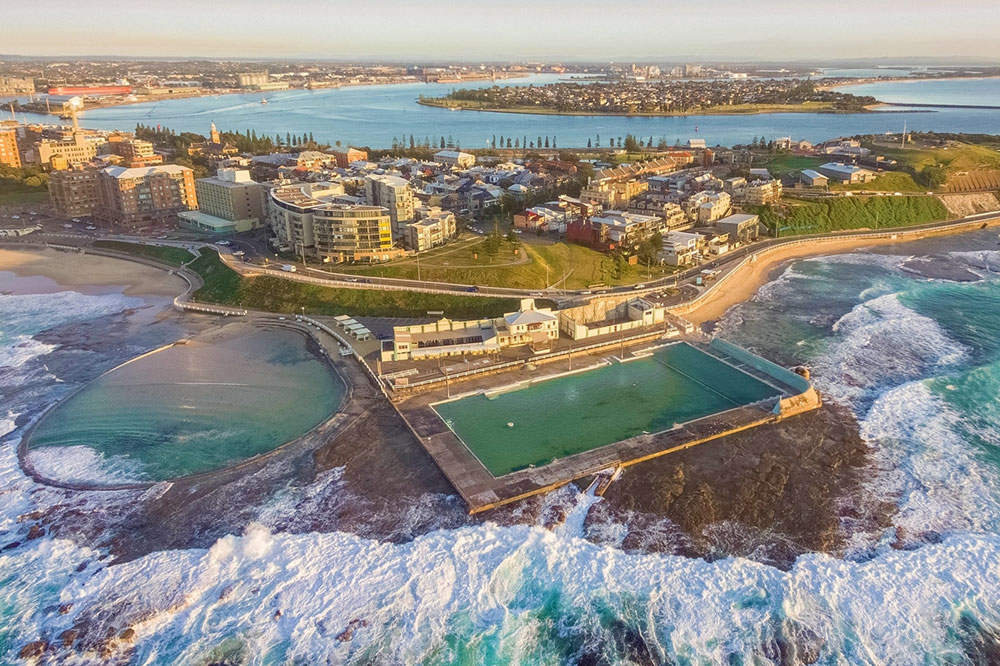
Newcastle, New South Wales
The Results of the August 2021 census were made public on 12th July 2022, and revealed that Australia has become a majority migrant nation, as the census data shows for the first time that more than 50 per cent of residents were born overseas or have an immigrant parent. Last year’s census counted nearly 25.5 million people, including 1 million new residents.
Australia’s 2023-24 Migration Program has been carefully designed to boost the social and economic outcomes that meet Australia’s needs. In fact, the migration programme was first launched in 1945 following the aftermath of World War 2. Given this long history, it is worth understanding how it works. The Australian Immigration Bulletin exists to help explain this in more detail.
As we’ve entered the 3rd month of the year, join us for a look at the latest news and developments in the world of Australian Immigration!
We asked those who have established themselves with skilled jobs to share their experience and tips for a career in Australia.
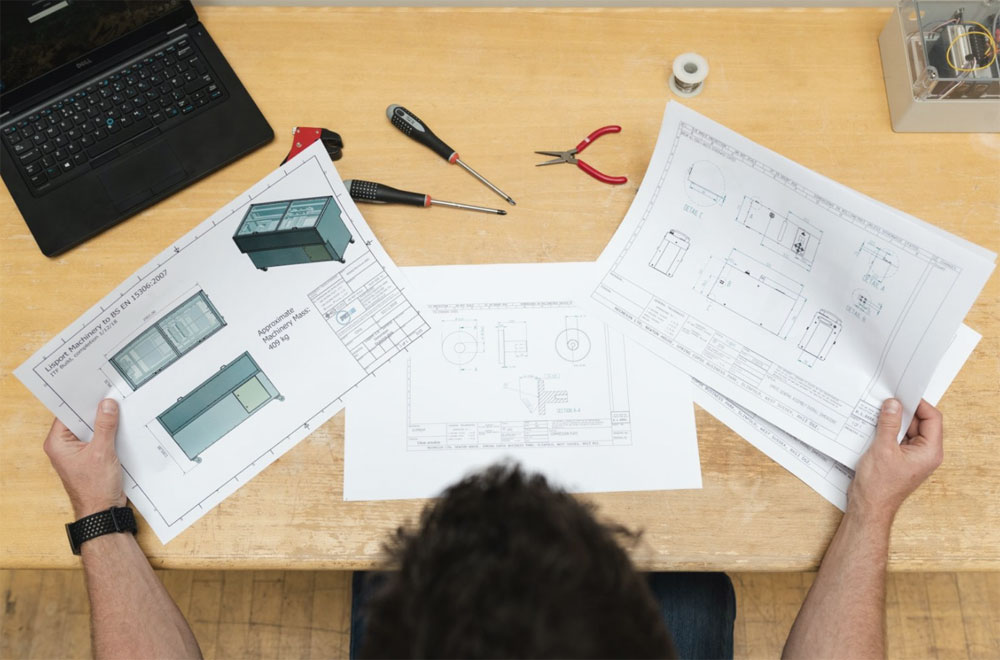
We spoke with Abdullah, a skilled migrant and civil engineer currently working for a private company.
Please tell us about yourself and when you moved to Australia.
My name is Abdullah and I come from Bangladesh and I moved to Australia in 2012.
What are some mistakes some migrants could avoid while looking and applying for jobs?
One acquaintance of mine said that if I found it hard to find a job in my sector, then it’s better to go with customer service or a hospitality job. This is not a bad idea for when you first arrive in Australia. But that is not your limit. The sky is your limit.
My advice to people who are studying, or who are looking for a job is to not limit your ambition.
It is difficult sometimes, because many people do not have the English level to match the requirements, but the language level is not always the main deal-breaker.
What is it that the employers are mainly looking for?
In my opinion, when the employer is looking for someone, they are looking for a sincere person that fits their purpose. They don’t look at whether you are local or international. If you have a good academic background, if you are sincere, if you can prove that you can serve them well, there is no reason for them not to hire you. When you are doing the job search, go beyond your limits.
What other practical advice can you give?
I made a lot of mistakes preparing my resume and cover letter. I didn’t pay much attention to them. During the shortlisting process, the employers don’t see you, they cannot know how smart you are. You probably need to speak to your local friends or those who are already working in the industry. Each industry has different applying procedures. Some industries prefer you to go physically and submit your resume, the others prefer you to apply online.
But the first thing is to pay attention to your resume and cover letter because that’s the first thing the hiring person is going to see. That’s the bridge between your employer and you.
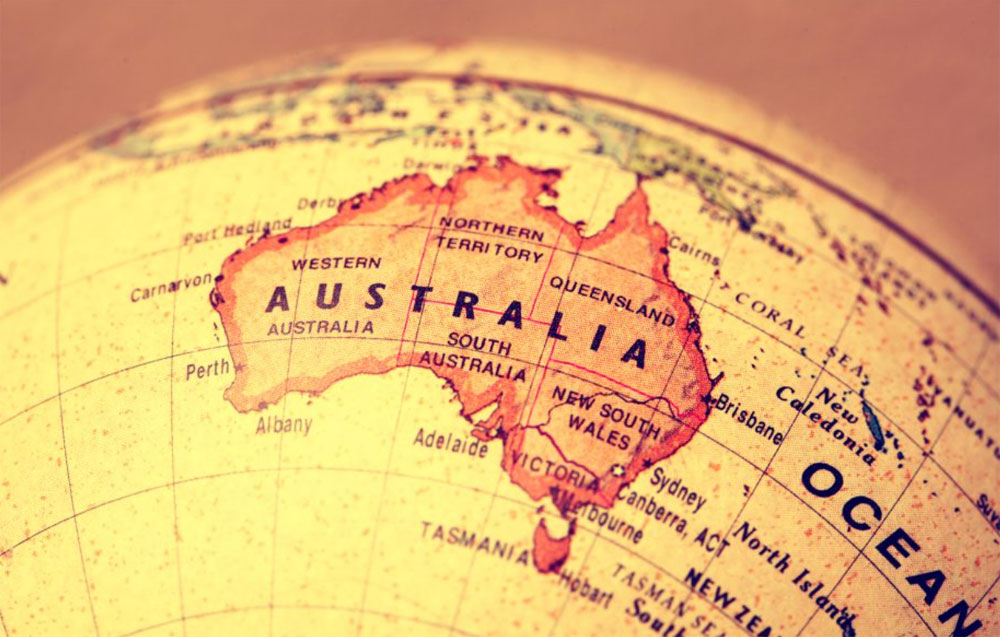
Australia aims to shift the overall character of its migration system away from temporary migration and toward permanent residence and citizenship.
A country’s ambition can be measured by its migration program. As birth rates decline, the ability for a country like Australia to enhance its capabilities will be reliant on its ability to import the skills it needs, and prevent itself from becoming an old country. In this regard Australia can be considered a mildly ambitious country.
It maintains a solid migration program, and within the federal government at least, there is an awareness of the domestic and geopolitical necessities for population growth.
A successful migration program continues to be Australia’s largest necessity as there is an increasing importance of Australia being a more active security actor in its region, and being able to develop new economic industries. These are things Australia is struggling to do with just 26 million people.
On infrastructure, Australia is notoriously slow and expensive. Project costs often balloon to ridiculous sums, and as a result, the federal government has recently canceled support for a number of projects, which will only add to the stresses on the country’s existing infrastructure.
The new migration strategy has sought to balance the country’s compelling need for more people with its political and structural problems around infrastructure.
Due to the backlog created by the COVID-19 pandemic, the net migration intake over the 2022-2023 financial year was 510,000 people. This figure for the forthcoming financial year (the end of June in Australia) is forecasted to be around 375,000 people.
In an attempt to reduce these numbers the government has decided to skew the system more in favor of high-skilled people seeking permanent migration. Alongside this, there will be more stringent requirements for international students to meet certain standards, and the age for applications for graduate visas will be reduced from 50 to 35.
Part of this reorganization is not simply to reduce numbers, but to shift the overall character of the migration system away from temporary migration and toward permanent residence and citizenship. This is undoubtedly a positive initiative that provides people with a greater investment in the country and hopefully a greater sense of civic engagement.
This approach to migration demonstrates that the government is thinking seriously about how it utilizes the migration program to build the country’s capabilities.
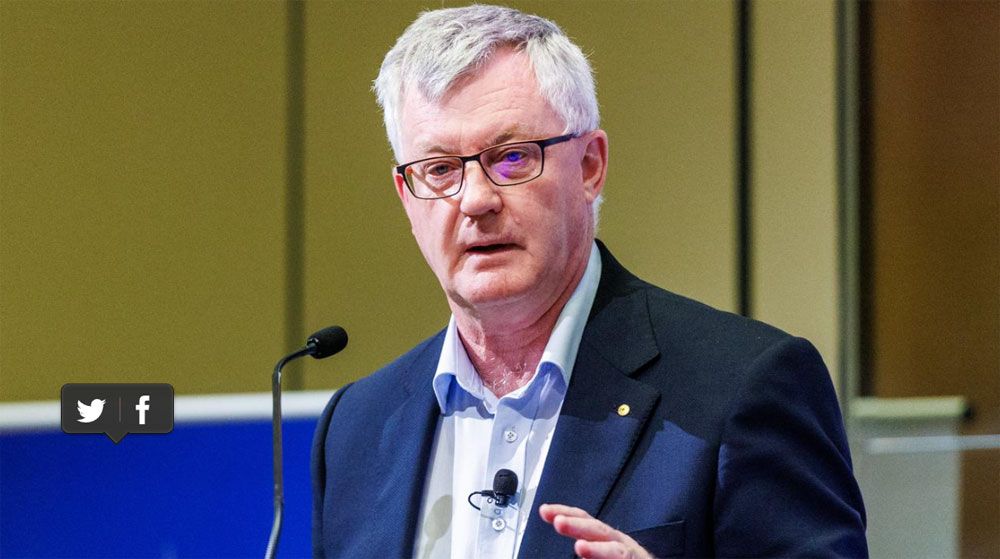
Immigration has made Australia the nation it is, as successive waves of new arrivals from all corners of the world have brought their talents, culture and aspirations to our shores. About one in four of us was born overseas, and almost half of us has a parent who was. For generations, capital brought by immigrants has opened up our economy and resources, and fostered new businesses. Australian society has been enriched by the heritage of newcomers, whose skills have staffed our industries and whose children, often, have excelled at school. International university students have paid a premium for the benefits of an Australian university education, helping themselves and enriching the sector.
But more rapid immigration in the post-Covid period, has triggered concerns about pressure on infrastructure. Reserve Bank economists calculate that the population grew by about 2.5 per cent in the year to September, almost double the four-decade pre-pandemic average.
The Albanese government has done the nation a favour engaging the former secretary of Prime Minister and Cabinet and of the Treasury, Martin Parkinson, to review the current situation and advise on the way ahead, bearing in mind, as his report says, that ultimately “the success of our migration program relies on the backing of the Australian people”.
The proposed reforms would bring about an enhanced “points system” for permanent migrants and updated occupation lists to better target the needs of employers, would see specialist, skilled workers paid at least $135,000 a year. A second category, a core skills stream, would be geared to workers able to earn at least $70,000 a year in jobs where qualified workers are in short supply, such as registered nurses or secondary school science teachers. The review also calls for better tailoring of regional visas and the Working Holiday Maker Program to support regional Australia.
The integrity and quality of international education, the report says, should be improved through higher English language requirements for international students and graduates. The government will not cap the number of students coming to study in Australia, or introduce extra fees, but it will aim to cull the intake through measures aimed at ensuring that student visas will be granted only to those with the best chances of eventually filling gaps in the local jobs market. That is in line with the approach of comparable nations such as the US, Canada and Britain.
Delivery of the constructive changes envisaged in the report will take time. They will contribute, however, to the productivity gains the economy needs.
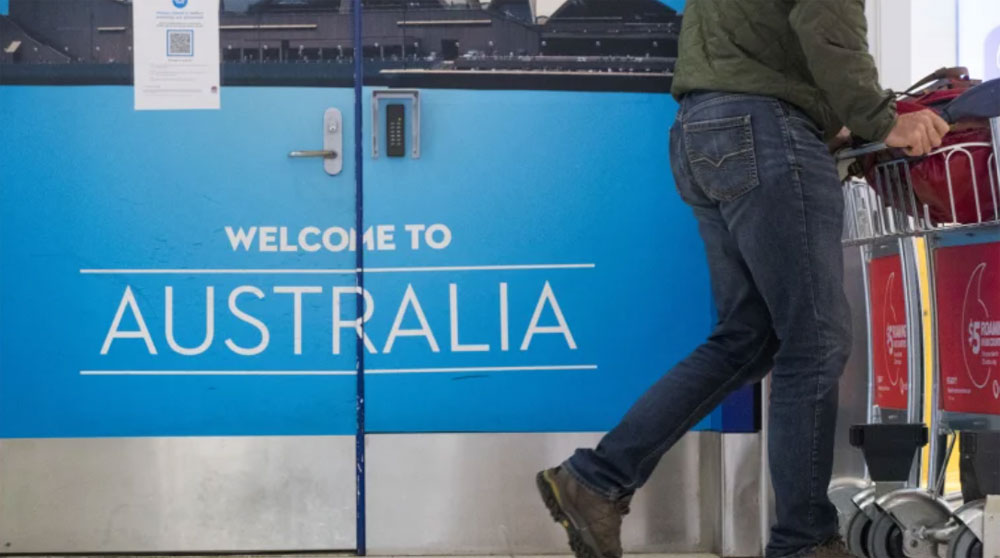 Migrants coming to Australia boost productivity and lift the wages of all locals, especially those with fewer skills or less education, international research into the nation’s immigration intake has revealed.
Migrants coming to Australia boost productivity and lift the wages of all locals, especially those with fewer skills or less education, international research into the nation’s immigration intake has revealed.
Amid a growing debate about immigration after a record number of people entered the country over the past 12 months, four separate research papers by the OECD show parts of Australia with higher inflows of migrants gain an economic benefit of almost $1500 a person.
Net overseas migration reached a record 518,100 people in the 12 months to the end of September, taking overall population growth to 2.4 per cent, the highest percentage in half a century.
More than 174,000 net overseas migrants called NSW home during the year, most of whom moved to Sydney, while Victoria accounted for another 154,000 people, with Melbourne their city of choice.
The new OECD research – based on the payroll records of 27 million people collated between 2011 and 2018 during which a net 1.7 million migrants moved into Australia – found those parts of the country with higher migrant numbers tended to have higher productivity levels.
That enhanced productivity was driven, in part, by the migrants moving into those regions. The OECD found almost 60 per cent of Australia’s migrants had tertiary education compared to about 40 per cent of the local-born population. Migrants to Australia had much higher levels of tertiary education than those in other countries.
The organisation’s researchers found that, on average, a one percentage point higher share of migrants was associated with higher productivity worth $1490 per person.
A one percentage point increase in annual migrant numbers boosts the employment levels of locally born Australians by 0.53 per cent. It did not seem to have a difference across the skill levels or age groups of the local-born.
“The arrival of migrants boosts native geographical mobility, resulting in higher regional employment of natives,” it found.
“The positive effect of migration on native employment is mainly driven by a substantial inflow of natives who were previously employed or unemployed in other regions.”
The OECD found those areas with larger migrant share tend to have wages around 1.3 per cent higher than those with an average level of migrants.
It also found that as the migrants had higher levels of productivity, that helped boost the wages of lower-income locals.
“This paper finds that Australian regions with larger shares of migrants tend to have higher regional wages, which provides evidence of a positive link between migration and labour productivity,” it said.
“Moreover, lower-skilled natives benefit slightly more from migration than higher-skilled natives.”
The OECD research, however, notes that as the nation’s capital cities are more likely to attract migrants, they are better placed to enjoy the productivity and wage boost associated with newcomers.
It also found that despite their high levels of education, migrants have lower employment rates relative to the native-born population. It said this “untapped potential” was largely due to female migrants.
“The gap mainly arises from a low labour market participation of migrant women,” it found.
Research recently released by the Institute of Public Affairs found that during 2023 Australia absorbed the largest number of net migrants on record. The number of new migrants as a proportion of the total population, at 1.67 per cent, was double the post-World War Two average.
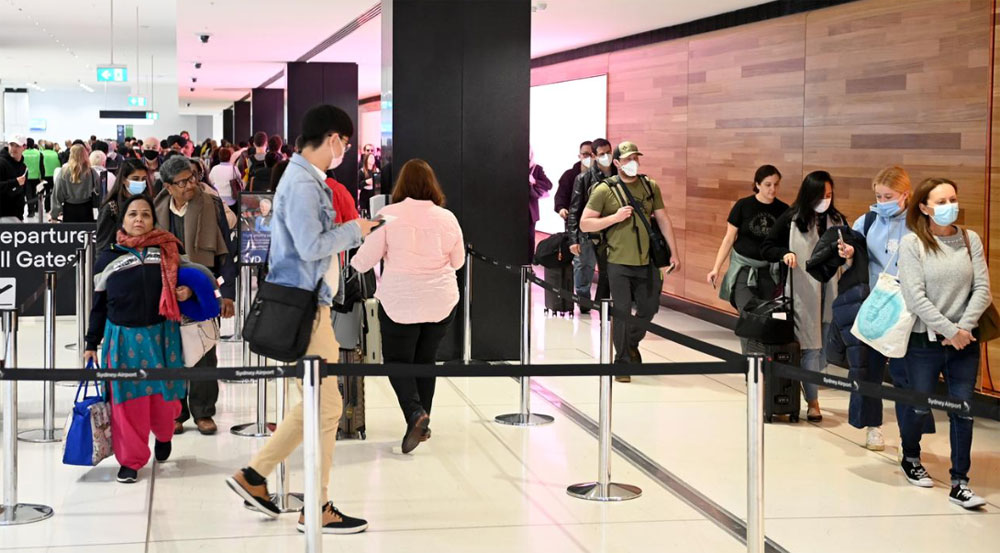
Grasping the demographic composition of Australia’s population growth is essential to comprehending the opportunities and challenges that lie ahead. Population projections serve as an excellent tool for this exercise.
The ABS population projections dataset is updated about every two years post-census, offering insights into Australia’s population trends up to 50 years ahead.
What sets this data apart is its segmentation by age and its presentation of three distinct scenarios (high, medium and low) based on varying assumptions about fertility, migration, and longevity.
With the Australian population at 26 million in 2022, under a high population growth scenario encompassing increased fertility, migration, and longevity, it is forecast to reach 46 million by 2071. In a medium scenario, the projection is 39 million, while under a low scenario, it is estimated to reach 34 million.
Regardless of the scenario, the 10-year average annual growth rate, standing at 1.4 per cent, is expected to diminish to a range between 0.2 per cent and 0.9 per cent.
Simultaneously, the median age, presently at 38.5 years, is anticipated to rise to a range of 43.8 to 47.6 years. This trajectory indicates a slower population expansion compared to preceding decades. The decelerated growth coupled with an extended life expectancy is poised to result in an ageing population, leading to a higher median age.
Population growth is comprised of natural increase (births minus deaths) and overseas migration. Fertility rates and life expectancy rates play a key role in determining the natural increase in population.
The latest figures for fertility rates stands at 1.63 at 2022. The fertility rate has continued to gradually decline and has remained at 2 or below since 1976.
The consistent decline in fertility rates indicates a long-term trend of smaller family sizes. This suggests factors such as societal changes and economic conditions are influencing family planning decisions.
In the high projection scenario, the fertility rate is estimated at 1.75, 1.64 in the medium scenario, and declines to 1.45 in the low projection scenario. Even in the high projection scenario, where fertility rates are assumed to be slightly higher, the increase is not significant, indicating a persistent trend towards smaller family sizes.
With fewer births, there are fewer young people entering the workforce.
This can result in labour shortages, reducing economic productivity and potentially hindering economic growth. It may also lead to increased competition for skilled workers, driving up labour costs.
On the other hand, life expectancy stands at 81.2 years for males and 85.3 years for females and has steadily been increasing since 1992. The steady increase in life expectancy is due to advancements in healthcare, improvements in living standards, and better access to health services.
This trend is expected to continue, with life expectancy rates projected to be higher than current figures in all three projection scenarios.
Among the anticipated shifts in Australia’s population, ageing is widely regarded as the most profound, heralding substantial alterations to the population’s age composition.
Projections show a drop in the percentage of children aged 0-14 years from 18 per cent in 2022 to 13-16 per cent by 2071.
Similarly, the working-age population (15-64 years) is expected to decrease from 65 per cent to 59-60 per cent by 2071.
Conversely, the proportion of people aged 65 years and over is forecast to rise from 17 per cent in 2022 to 25 -27 per cent by 2071. Additionally, the percentage of individuals aged 85 years and over is projected to increase from 2.1 per cent in 2022 to 5.2-6.4 per cent by 2071.
An ageing population has implications for healthcare, social services, labour force participation, and economic growth.
Policymakers may need to address challenges such as providing adequate healthcare for elderly populations, ensuring sufficient retirement income, and promoting workforce participation among older adults.
Despite variations in fertility and mortality assumptions across projection scenarios, the overall impact of natural increase on population growth is limited.
In all projection scenarios, overseas migrant arrivals are assumed to exceed departures, resulting in positive net overseas migration between 9.2 million to 14.3 million in total between 2022 and 2071.
Overseas migration is key to Australia’s population growth.
To help us understand the key role played by migration, this data offers us a zero-migration assumption where the population growth is based on natural increase alone. According to this assumption, without migration Australia’s population will gradually decline, dropping to 23.9 million by 2071.
A declining or stagnant population can lead to a shrinking workforce, resulting in labour shortages and reduced productivity.
Additionally, a smaller working-age population may increase dependency ratios, where fewer workers support a larger retired population.
With fewer people in the workforce contributing taxes, governments may struggle to fund social welfare programs, healthcare, and pensions.
This can lead to increased pressure on public finances and necessitate reforms to ensure the sustainability of social safety nets.
This data underscores the crucial role of migration in driving Australia’s population growth. While a rise in population currently brings about notable housing challenges, a decline in growth will introduce fresh hurdles in the housing and real estate sector. A shrinking population can result in surplus housing supply, diminishing property values, and difficulties in rejuvenating urban spaces.
Addressing the current housing challenges necessitates the construction of more homes and the diversification of housing options to accommodate individuals from diverse backgrounds and socio-economic statuses.
Moreover, a declining population will exacerbate the already low economic growth in regional areas where population growth is vital for the area’s development. In such regions, a diminishing population can lead to decreased economic activity, limited job opportunities, and reduced demand for goods and services.
This downward spiral can impede investment and infrastructure development, hindering the region’s ability to attract businesses and retain skilled workers. Thus, population growth from migration is essential to stimulate economic growth and promote sustainable development.
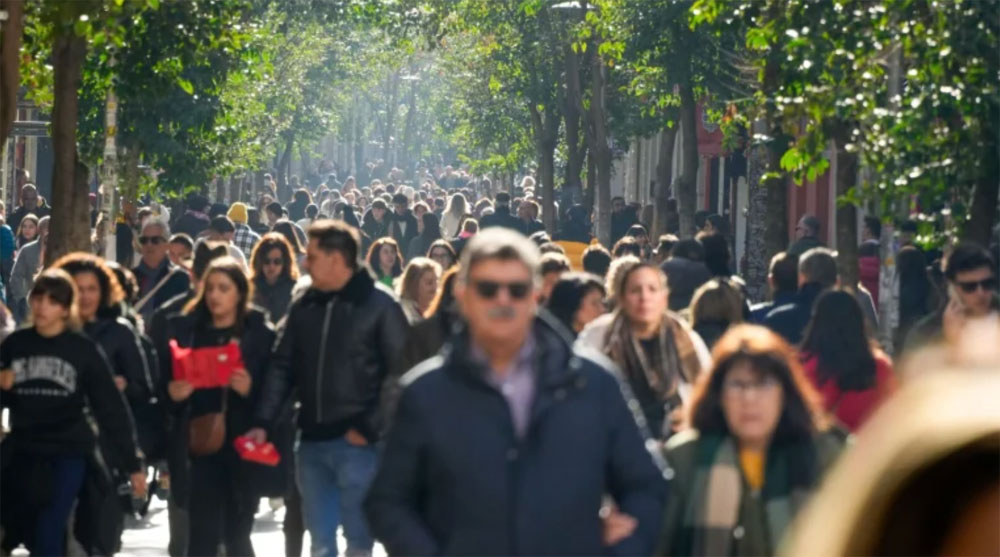
Statistics about the population and components of change (births, deaths, migration) for Australia and its states and territories.
Key statistics
Statistics in this release are commonly known as Estimated Resident Population (ERP).
National
Annual population change
In the year ending 30 June 2023, Australia’s population grew by 624,100 people (2.4%).
*Australia’s population growth is comprised of natural increase (births minus deaths) and net overseas migration (migration arrivals minus migration departures).
Components of quarterly population change
In the June 2023 quarter, natural increase:
In the June 2023 quarter, net overseas migration:
Components of annual population change
In the year ending 30 June 2023, natural increase:
In the year ending 30 June 2023, net overseas migration:
States and territories
*State and territory population change is comprised of natural increase, net overseas migration, and net interstate migration (interstate arrivals minus interstate departures).
Annual population change
Components of annual population change
For the year ending 30 June 2023:
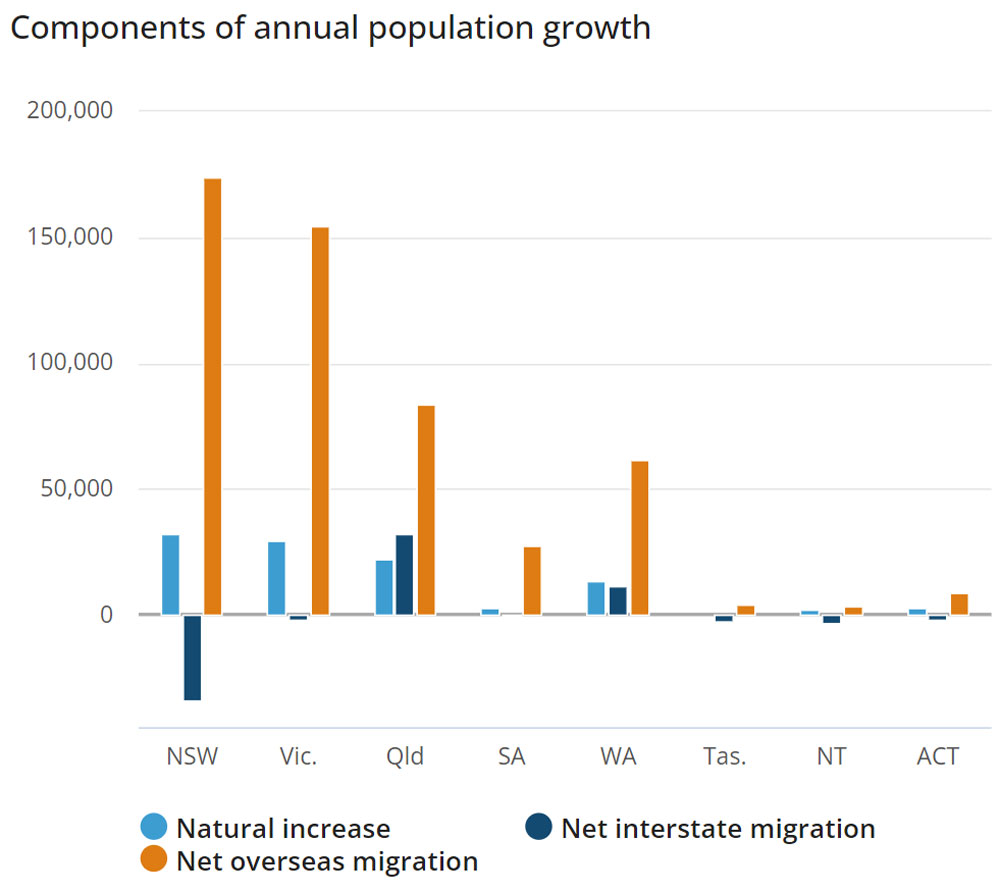
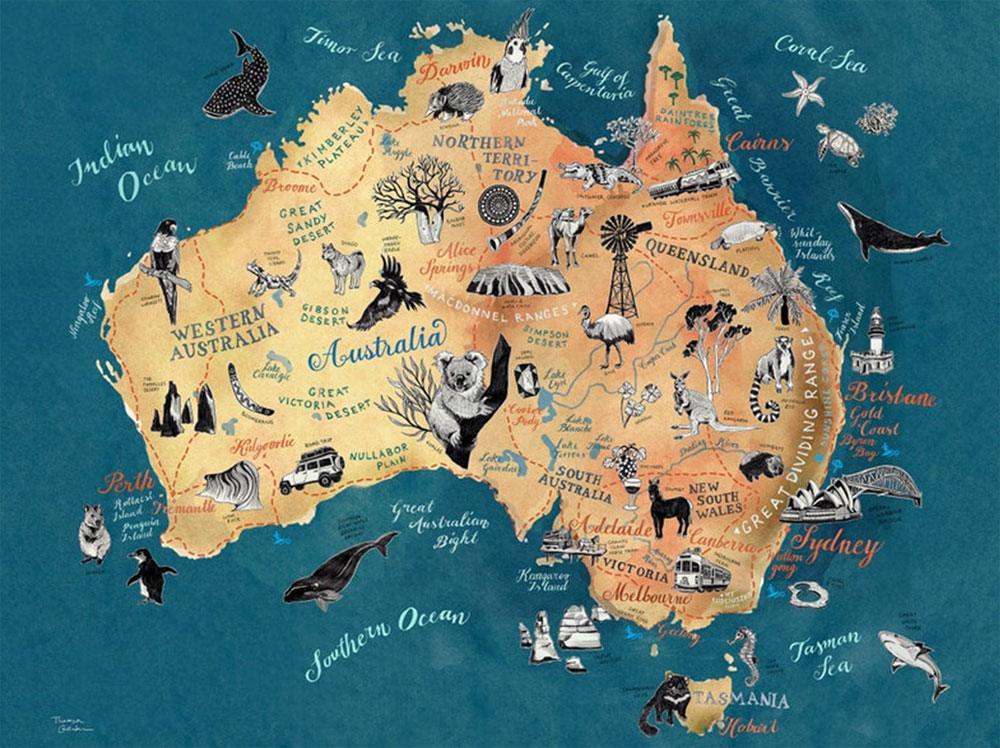
If you are interested in applying for a general skilled migration visa to Australia, it is important to have a good understanding of the skilled visa options and how the migration points test works, so that you can maximise your chances of being eligible to apply for a skilled visa.
A general skilled migration visa is an option available to skilled workers who are seeking to qualify for a skilled visa independently, or under a state or family sponsorship. It is an alternative to an employer sponsored visa.
One of the key criteria to qualify for a general skilled migration visa is the points test (a criterion that does not apply to employer sponsored visas). This is often the most challenging aspect for prospective skilled visa applicants to overcome when seeking an invitation to apply for the relevant skilled visa.
If you are considering applying for a general skilled migration program visa, an important concept to understand is the Expression Of Interest (EOI).
If you are considering applying for a general skilled migration visa, it is important to be aware that for certain visas in this visa class, you will first be required to lodge an EOI with the Department of Home Affairs (the Department) through Skill Select. The EOI is not a visa application, but rather, it is the process by which you can express your interest in applying for the relevant skilled visa (It’s important to note, that there is NO fee to submit an EOI).
This requirement applies to the following skilled visa subclasses:
Let’s take a brief look at each of these visas below:
The ‘subclass 189’ is a federal sponsored visa that grants automatic permanent residence in Australia. It is subject to nil visa conditions or obligations. For this reason, it is often considered to be the most flexible of the skilled visa options available.
A subclass 189 points-based visa allows you to live and work in any state or territory permanently.
The ‘subclass 190’ is a state/ territory sponsored permanent residence visa. It is another points-based visa for which invitations are issued throughout each month by individual states and territories. One of the benefits of applying for state nomination is that you will be granted an additional 5 points.
An important aspect to consider, which does not apply to the subclass 189 visa is that there is an added step in the application process. In this case, you must also apply for nomination approval to a state or territory government. Only upon receipt of an invitation from the relevant state or territory to which you apply can you then apply to the Department for the visa itself.
Your obligations as a subclass 190 visa holder are that you must commit to your nominating jurisdiction’s obligations and commit to residing in your nominating State or Territory for two years from visa grant.
The ‘subclass 491’ is also a points-based state/ territory (or family) sponsored visa. It is a regional visa with a term of five years. The Department issues invitations for family sponsored EOI applications only (in invitation rounds). Invitations for state sponsorship are issued by individual states and territories throughout each month. This will grant you an additional 15 points for the nomination.
Being a provisional visa, this means it provides a pathway to permanent residence in Australia with the Subclass 191 Permanent Residence (Skilled Regional) visa, subject to meeting specified requirements.
Be mindful that as a subclass 491 visa holder, you must abide by visa condition 8579, which requires you to live, work and study in a designated regional area of Australia. For migration purposes, most locations of Australia outside of major cities (Sydney, Melbourne, Brisbane, Perth, etc.) are classed as regional areas.
If your EOI is successful, you will receive an invitation to apply for the visa, as specified in the invitation letter. This then enables you to proceed with lodgment of your visa application (provided you meet all other visa lodgment and visa grant requirements).
Please note, the below State and Territory program updates is a general overview only. It does not take into account any of your personal circumstances. You must check the State/Territory information carefully to ensure you can meet all the requirements for nomination.
Australia is currently facing a shortage of skilled migrants to fill workforce demands. In response, states and territories have been easing the conditions of their visa programs to help attract skilled workers from overseas.
Below is the monthly update for some of the State and Territory opportunities available.
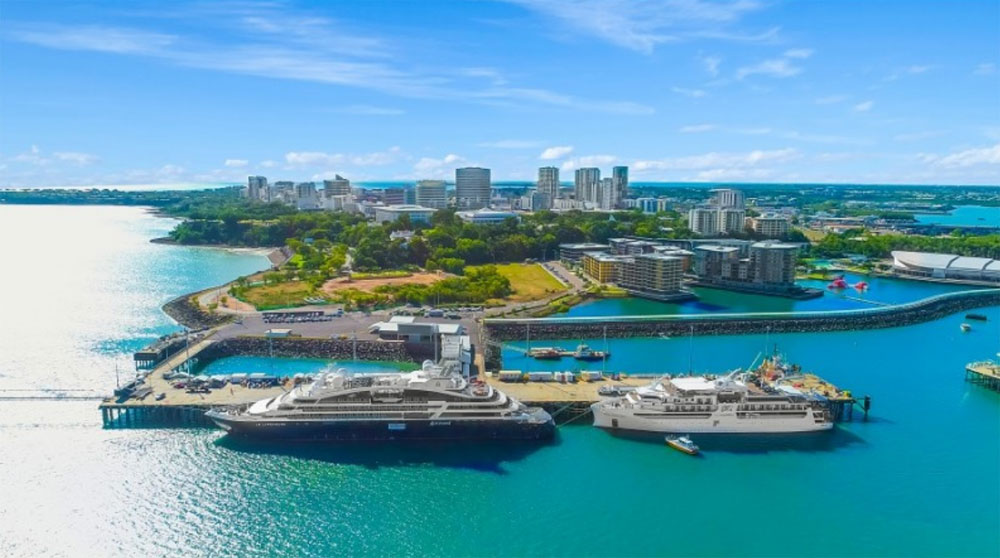
Program Status Update
UPDATE: NT GSM nomination applications for 2023-24 now open for subclass 491
The NT Government have begun accepting new applications for nomination under the Skilled Work Regional (Provisional) subclass 491 visa program.
Applications are assessed under new eligibility criteria as published on the NT website.
A summary of key changes to eligibility criteria are as follows:
Please see the full eligibility criteria.
Onshore applicants should make their applications well ahead of any visa expiry dates. Those who have visas expiring should seek professional advice on their visa options and ensure that they remain lawful during their stay in Australia.
It is the applicants’ responsibility to ensure that they meet visa eligibility criteria, including maintaining valid skills assessments and English test results.
People residing offshore are eligible to be considered for Northern Territory (NT) nomination. Invitations to apply for Northern Territory nomination will be via the ranking system.
The ‘Northern Territory Offshore Migration Occupation List’ identifies the occupations in current demand in the Northern Territory. This List is important if you want to apply for Northern Territory nomination for either a:
The ‘Northern Territory Offshore Migration Occupation List’ is only applicable for those applying for NT nomination from outside Australia, under the Priority Occupation stream.
Please note: The Northern Territory government has advised that offshore applicants will generally only be offered a Northern Territory nomination for a subclass 491 visa. Subclass 190 nominations will only be offered in exceptional circumstances, such as cases where the applicant has strong connections to the NT.
The NT advises eligible applicants to apply as soon as they meet the eligibility criteria. To receive a nomination from the NT Government, you must:
Before submitting an EOI for The Northern Territory, applicants should check that they meet all eligibility requirements.
For a further explanation, see the Frequently Asked Questions page on the Northern Territory Government website.
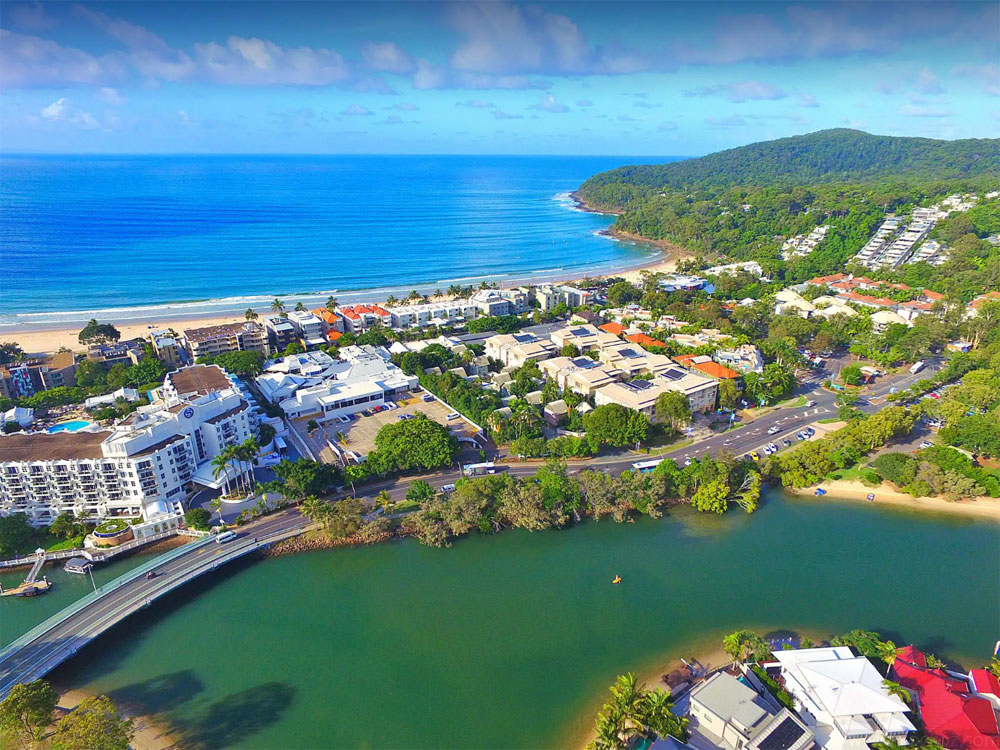
Program Status Update
To manage Queensland’s COVID recovery response, applicants currently residing offshore are now able to apply.
Depending on your occupation and situation, there are two state nomination options available for skilled migrants through Queensland.
For Queensland state nomination, prospective applicants must meet the Department of Home Affairs requirements, state-specific occupation requirements and have skills in an occupation that is available on the Queensland Skilled Occupation List.
You may undertake employment once onshore in Queensland through:
Offshore applicants meeting the minimum published requirements are eligible to lodge an Expression of Interest (EOI).
NOTE: The 2023 – 24 program opened on 5 September 2023. Migration Queensland will only consider EOIs lodged on or after 5 September 2023 – updated EOIs will not be considered.
Migration Queensland criteria requires you to:
The agency also requests all applicants to ensure they have carefully read and understood the new criteria relevant to their stream or pathway, and that they meet the criteria before submitting an Expression of Interest (EOI).
The 2023-24 Skilled Migration Program will be open to both onshore and offshore applicants and provide pathways for skilled workers, graduates, and small business owners.
Before submitting an EOI for Queensland, applicants should check that they meet all eligibility requirements.
For a further explanation, see the Frequently Asked Questions page on the Queensland Government website.

Program Status Update
Open to offshore applicants, the program provides skilled migrants with a pathway to permanent residency in Victoria. The skills that successful applicants bring to Victoria benefits employers and the broader Victorian economy.
The program provides two visa pathways:
As with previous years, applicants will first need to submit a Registration of Interest (ROI) and then be selected on competitive merit to apply for visa nomination.
NOTE: If you submitted a subclass 491 ROI for the 2022-23 program, you must submit a new ROI for the 2023-24 program.
If you submitted a subclass 190 ROI for the 2022-23 program, you do not need to submit a new ROI for the 2023-24 program. You should ensure that all information in your ROI is still correct.
Both onshore and offshore applicants are eligible to submit a Registration of Interest (ROI) for both the subclass 190 and subclass 491 visas.
Your ROI will remain in the system for selection until it is withdrawn, selected or the program year ends.
Before submitting an ROI for Victoria, applicants should check that they meet all eligibility requirements.
For a further explanation, see the Frequently Asked Questions page on the Victoria Government website.
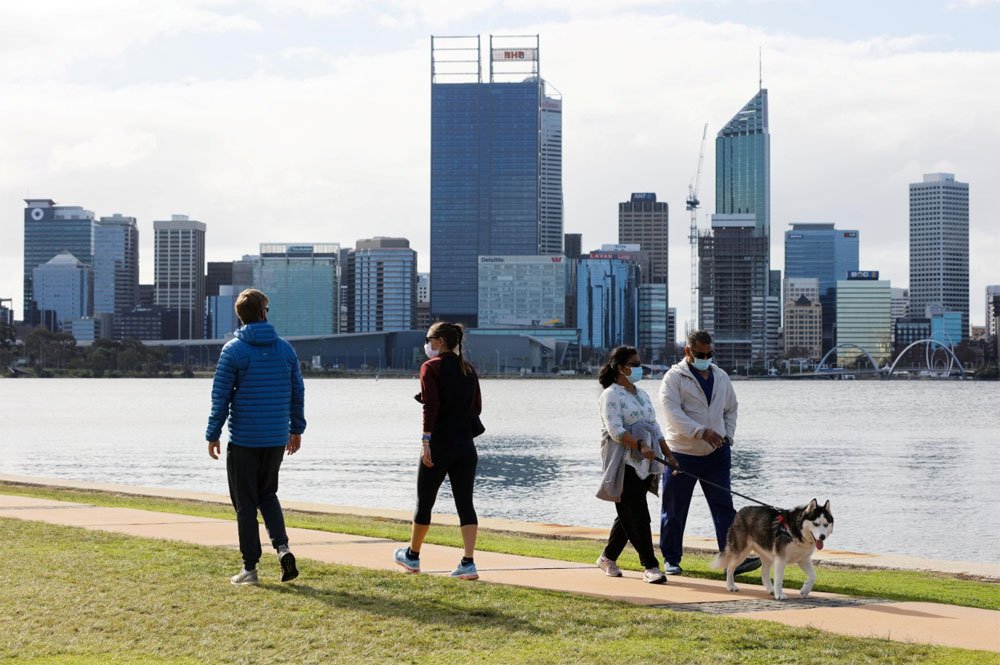
Program Status Update
UPDATE: Closure of the WA State Nominated Migration Program applications for financial year 2023-24
The number of WA applications received under the State Nominated Migration Program (SNMP) has now exceeded the available allocations for the 2023-24 program year (1st July 2023 – 30th June 2024).
WA Migration Services will stop accepting new SNMP applications from close of business on 2 February 2024.
Existing applications that have already been lodged prior to this time will continue to be assessed under existing eligibility criteria, and eligible applicants will be issued nominations (subject to availability of allocations).
Some eligible applications lodged prior to the program closure date will not be considered as part of the 2023-24 program year. Applicants will be contacted if this applies to their application.
Once the above mentioned temporary closure is lifted, you may be able to proceed with the WA’s usual skilled migration program. Program details below:
People residing offshore are eligible to be considered for Western Australia (WA) State nomination. Invitations to apply for WA State nomination will be via the ranking system.
The Western Australian Skilled Migration Occupation List identifies the occupations in current demand in Western Australia. This List is important if you want to apply for Western Australia nomination for either a:
Please note that to be eligible for an invitation in the WA State Nominated Migration Program, you must meet both:
Before starting your application, you will need to check whether your occupation is available on either the WA Skilled migration occupation list (WASMOL) Schedule 1 or 2, or the Graduate occupation list. You can search for your occupation here. (The occupation list search bar is located under the heading ‘Eligible Occupations’.)
Features of the WA 2023-24 State Nominated Migration Program:
Before submitting an EOI for Western Australia, applicants should check that they meet all eligibility requirements.
For a further explanation, see the Frequently Asked Questions page on the Western Australia Government website.
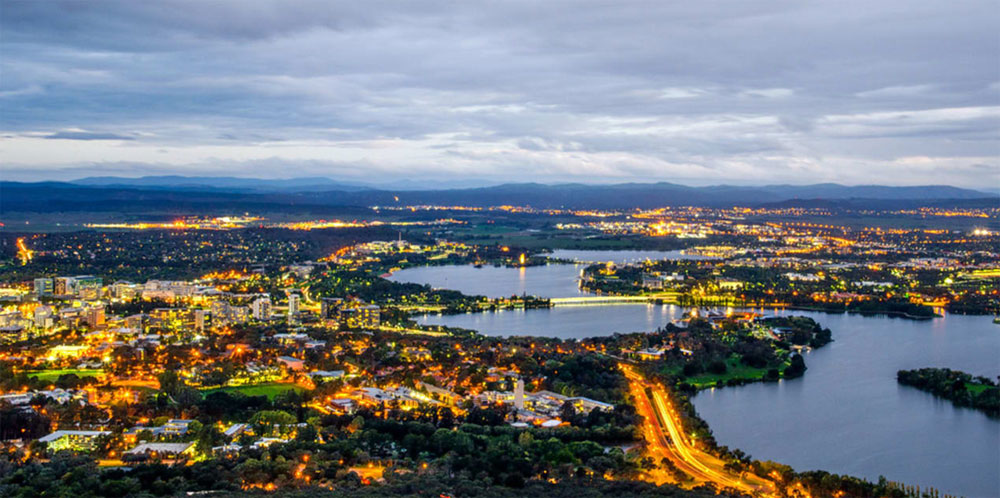
Program Status Update
The ACT Critical Skills List identifies the occupations in current demand in the ACT. This List is important if you want to apply for ACT nomination for either a:
The ACT Government will update this list every four months to make sure that the ACT Skilled Migration Program adapts and responds to the evolving critical skills needs of the ACT economy.
The Canberra Matrix is weighted to ensure that applicants who will make a positive economic contribution to the Territory and/or have demonstrated a genuine commitment to the ACT are more likely to be ranked and invited to apply for ACT nomination.
*ACT nomination does not guarantee a migration outcome. You must still meet the Department of Home Affairs criteria.
Every month, a certain number of nomination invitations are available (prorated on the annual allocation) to those working in the highest ranked Matrix in each occupation.
You can view the ACT’s most in-demand skills for skilled migration by consulting the ACT Critical Skills List.
Before submitting an EOI for The Australian Capital Territory, applicants should check that they meet all eligibility requirements.
Once you’ve submitted a valid Department of Home Affairs Skill Select EOI, follow the ACT Government Process to apply for ACT nomination.
For a further explanation, see the Resources page on the ACT Government website.
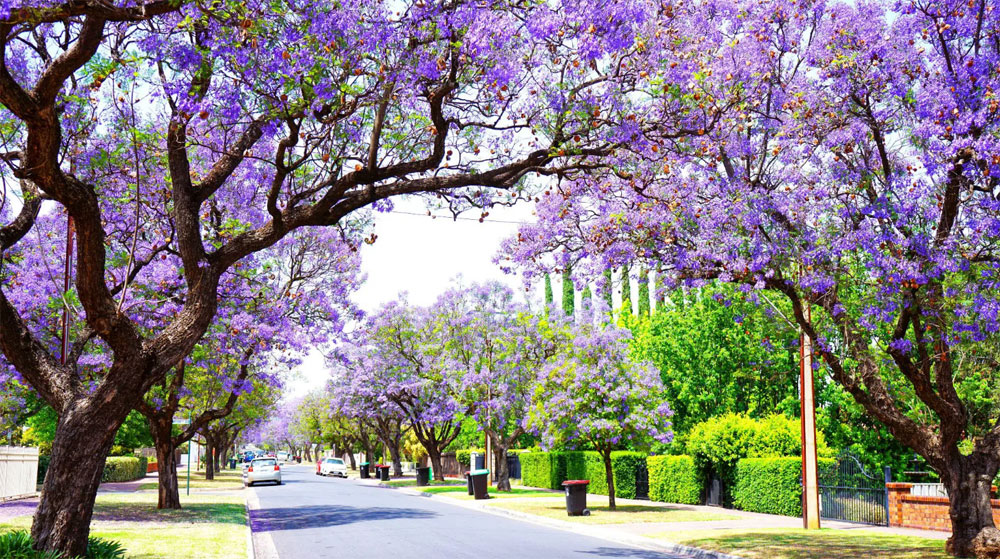
Program Status Update
To manage South Australia’s COVID recovery response, applicants currently residing offshore are able to apply.
Depending on your occupation and situation, there are two state nomination options available for skilled migrants through South Australia.
For South Australian state nomination, prospective applicants must meet the Department of Home Affairs requirements, state-specific occupation requirements and have skills in an occupation that is available on the South Australian Skilled Occupation List. Offshore applicants meeting the minimum published requirements can now lodge an Expression of Interest (EOI).
There is an enormous range of occupations on South Australia’s Skilled Migration Occupation List in a range of industries – search for your occupation here.
South Australia will select offshore applicants to apply for state nomination from those who have submitted an Expression of Interest (EOI) through SkillSelect. Offshore applicants will not need to lodge a Registration of Interest (ROI) for this year’s program. South Australia will be nominating offshore applicants from over 250 occupations on South Australia’s Skilled Migration Occupation List. To be eligible, ensure all the information in your SkillSelect EOI is up to date and you have selected South Australia as your first preferred state or territory to move to in Australia.
South Australia will be assessing candidates on merit by the following factors, within their nominated occupation:
Before submitting an EOI for South Australia, applicants should check that they meet all eligibility requirements.
For a further explanation, see the Frequently Asked Questions page on the South Australia Government website.
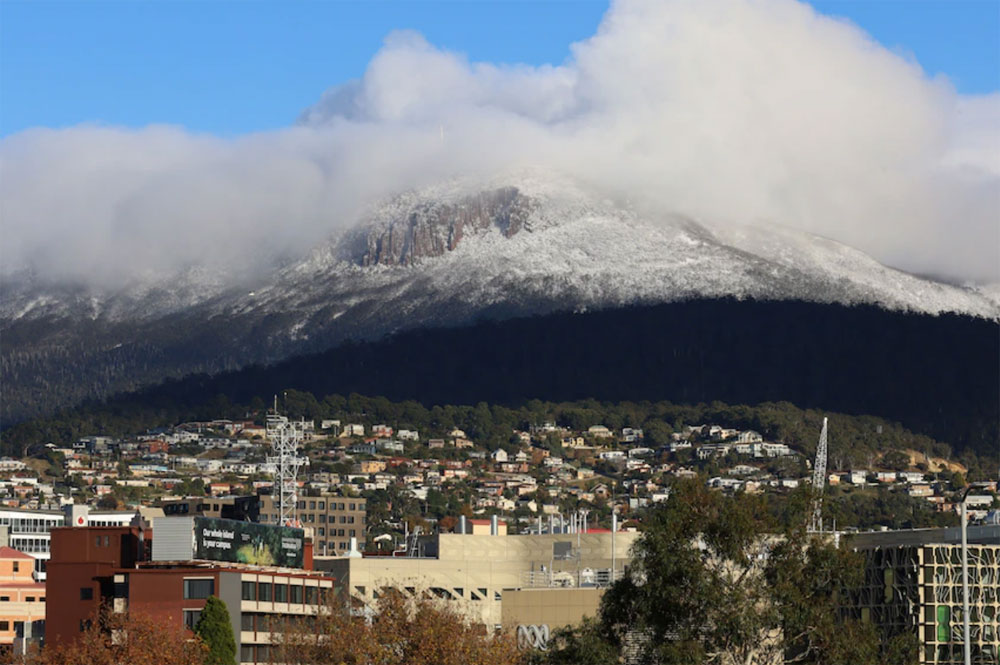
Program Status Update
Working in Tasmania
The two state nomination options available for skilled migrants through Tasmania are:
The Tasmanian State Nomination Skilled Migration Program supports Tasmanian businesses and increases the state’s working age population. It does this by attracting and retaining migrants with skills genuinely in need by employers, or with the capacity to settle in Tasmania through skilled employment in the long-term, and business activities that will increase employment opportunities.
Tasmania’s skilled migration program is for people wanting to move to the state who have skills that Tasmania need. Skilled migrants are attracted to Tasmania because of the state’s enviable lifestyle, career opportunities, affordable housing, reputable schools and a globally recognized university.
The Migration Tasmania Application Gateway is now available for registrations of interest (ROI) and applications for skilled visa nomination from Tasmania.
Anyone seeking Tasmanian nomination for a Subclass 190 Skilled Nominated Visa or Subclass 491 Skilled Work Regional Visa must first register in the Migration Tasmania Application Gateway .
Before submitting an ROI for Tasmania, applicants should check that they meet all eligibility requirements for either;
ROIs submitted before 1 July 2023 will remain valid for the 2023-24 program year.
ROIs and applications submitted from 5 July 2023 fall under the new eligibility requirements.
In cases where new requirements are likely to be beneficial, candidates may wish to withdraw their current ROI and submit a new one. (There is no charge to submit a Registration of Interest)
For a further explanation, see the Frequently Asked Questions page on the Tasmania Government website.
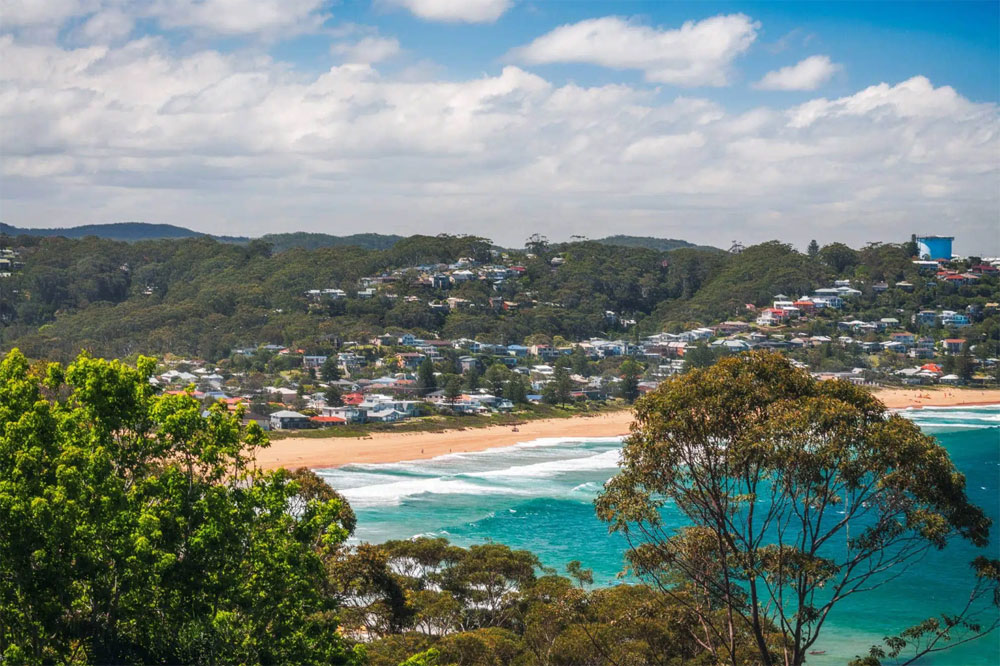
Program Status Update
The New South Wales government has invited applications from offshore migrants under the following nomination streams:
The NSW State Government announced that offshore applicants skilled in certain ANZSCO unit groups are still eligible for NSW nomination.
*Please note: Invitation rounds occur frequently throughout the financial year with no set date.
NSW invites and nominates SkillSelect EOIs at the ANZSCO unit group level. To be eligible for NSW nomination (for either Subclass 190 or Subclass 491) you must be skilled in an occupation that both:
It is important to note that not all occupations within ANZSCO unit groups are eligible for the respective visa. It is the responsibility of the prospective migrant to ensure their occupation is eligible for the visa before obtaining a skills assessment.
Your EOI must be exclusively for the ‘Skilled Nominated visa (Subclass 190)’ or ‘Skilled Work Regional visa (subclass491)’ and seeking nomination from NSW only.
This means that if your Skillselect EOI has multiple visas and/or multiple states selected (this includes selecting ‘ANY’), your Skillselect EOI will not be considered for NSW nomination.
What are the NSW target sectors?
The NSW target sectors are specific industry sectors that have been identified by data research as having critical skills shortages in NSW. They include:
Although all validly submitted SkillSelect EOIs will be considered during an invitation round, priority is given to EOIs in these target sectors.
Is my occupation within a NSW target sector?
The NSW government cannot confirm whether individual occupations fall within NSW’s target sectors. So long as you maintain a validly submitted EOI in SkillSelect, your EOI will be considered in all future NSW invitation rounds.
Will NSW invite EOI’s in occupations outside of the NSW target sectors?
High-ranking EOIs in occupations outside of the NSW target sectors may be considered during invitation rounds; however, it’s crucial to understand that the odds of receiving an invitation are exceptionally low due to high demand and limited spots.
Before submitting an EOI for New South Wales, applicants should check that they meet all eligibility requirements for either;
For a further explanation of how the skills list works, see the Common questions about skilled visas page on the NSW Government website.
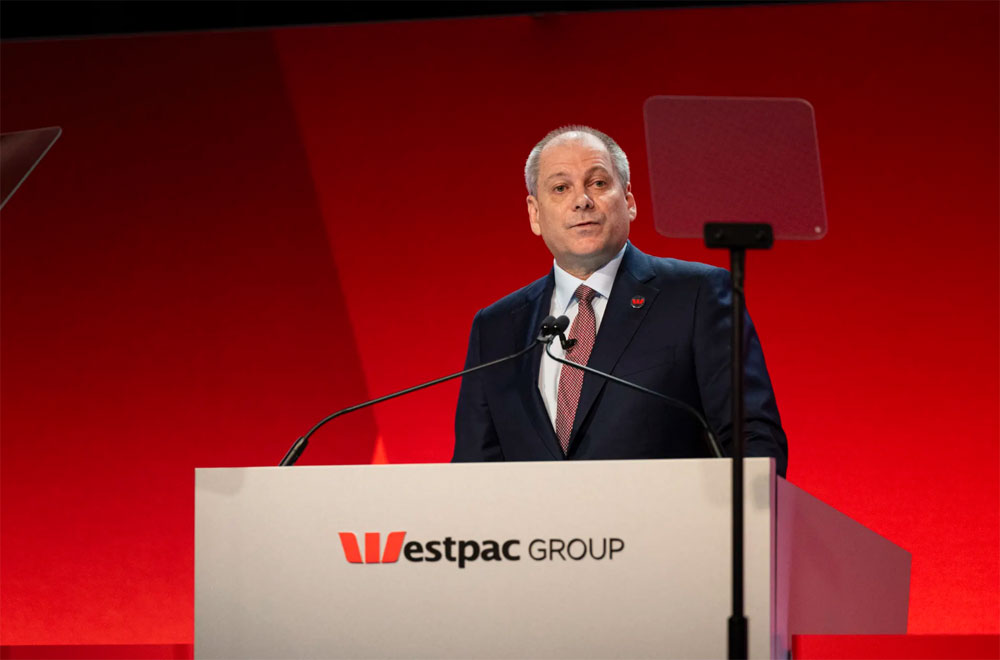
Westpac chief executive Peter King says he expects the economy to remain resilient as the bank reported a $1.5 billion dollar first quarter profit.
In a recent update to the ASX, King said the economic slowdown, combined with easing inflationary pressures, should raise the possibility of interest rate cuts within the year, and that businesses in particular were performing robustly.
“From a credit quality perspective, we saw a reduction in business stress,” he said. “We expect the economy to remain resilient, supported by low unemployment and healthy corporate sector balance sheets.”

For generations, Perth’s suburbs have been shaped by the communities of migrants who have made them home.
Historically, Western Australia’s overseas migrant population has been dominated by the British, followed by New Zealanders and Italians. However, in recent decades, an increasing number of people from South Africa, India and the Philippines are choosing to call Perth home.
What is the top overseas country of birth per suburb?
In every suburb in Perth, there are more people who were born in Australia than any other country. This map shows the most common country of birth after Australia in each suburb.
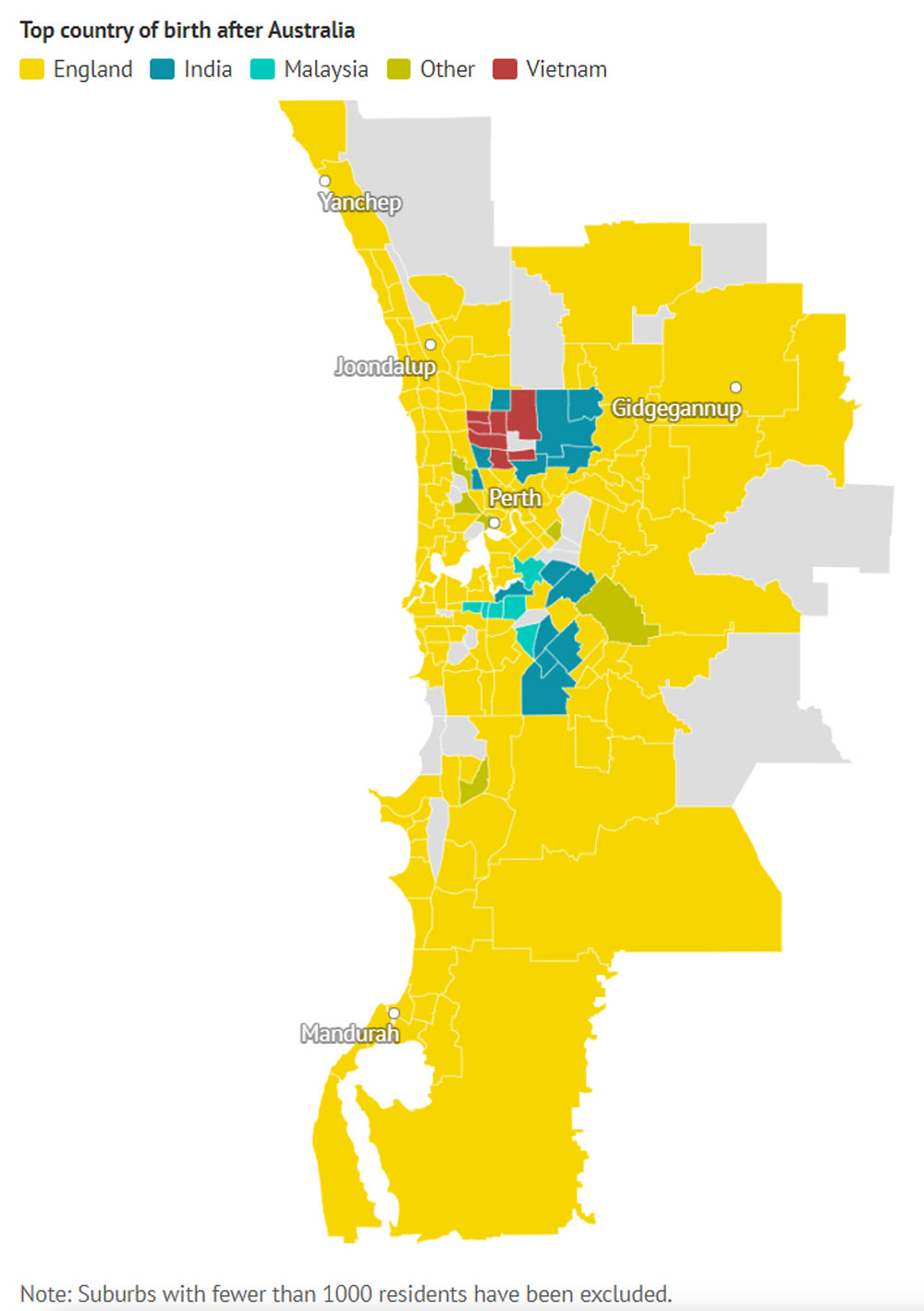
University of Western Australia social demographer Amanda Davies said it was common to see migrants from certain countries arriving in waves.
“The most well-known wave would be migrants coming from the UK in the 1950s and 60s and that’s really dominated the migration flows over the course of 50 years,” she said.
“We’ve also had waves of migration from southern Europe post-war, and then we had a wave of migration coming out of Vietnam around the conflicts there, and much more recently we’ve had an increase in migration coming from other parts of the world like India, Bangladesh, Malaysia, Singapore and China.
“Migration is usually impacted partly by factors in our economy such as expansion of the mining sector, different pools for skilled migration, but also factors happening elsewhere, like push-out factors such as lack of employment or civil conflict.”
The most common overseas countries of birth of West Australians
Australia remains by far the most common country of birth, with England the second most popular country of origin for most Perth suburbs, however, there are pockets where newer migrant populations are flourishing.
Strong Indian populations exist in Perth’s south-east, particularly the Cannington and Canning Vale areas, while a growing number of those born in the world’s most populous country are also moving to the north-east to areas such as Brabham and Beechboro.
Vietnam is the second most common country of birth in the neighbouring suburbs of Ballajura, Girraween and Balga, while Malaysians are typically choosing to live in the Perth inner southern suburbs of Willetton, Winthrop and Bullcreek.
The Bhutan population is one of the fastest growing in the state, with fewer than 30 Bhutanese people calling Perth home 20 years ago. According to the latest Census, nearly 5000 people from the South Asian country, situated at the edge of the Himalayas, now reside in Perth.
Tashi Kipchu Namgyal, 26, migrated to Perth from Bhutan in 2022 to study a master’s degree in engineering at UWA.
Like many people from his small country, he moved to Wembley, where the Bhutanese have become the most common migrant population, and lived with his brother until he found his own place.
“[Wembley] is affordable, it’s convenient and close to public transport for the universities,” he said.
“So one person came, two people came … the Bhutanese are quite interconnected with each other, we love to live close.
“We are considered very humble, low-profile people.”
Kipchu Namgyal withdrew from university after his part-time business as an international education agent helping Bhutanese people study abroad took off.
He said the education opportunities were one of the main reasons more Bhutanese people were calling Perth home, along with the lifestyle and close timezone to his native country.
“Perth has the largest Bhutanese community living abroad anywhere in the world,” he said.
Davies said migrants clustering in certain areas was a common occurrence.
“The more people that make the move, the more people that are likely to make the move,” she said.
“Moving very particularly to Wembley indicates that people are being assisted in that migration, so it’s a great indicator that there’s a strong community network operating to help people migrate and settle in to the community.”
WA’s net population is growing faster than any other Australian state, increasing by 86,800 people in the year to June 2023.
According to Australian Bureau of Statistics data released earlier this month, most of the state’s new residents were overseas migrants (61,591), followed by natural increase (13,548) and interstate migration (11,630).
Around one-third of people residing in WA were born overseas.

The festivities’ popularity isn’t lost on older migrants from Asia, who arrived in a country very different from today’s Australia.
Simon Chan has watched Sydney’s lunar new year celebrations grow over the past two decades, from the small-scale events of the early 90s to what are today thought to be the largest outside Asia.
“Its almost like having a World Cup or the Olympics again, obviously on a smaller scale but the feeling is similar,” says Chan, the president of the Chinese Australian Forum, adding: “We see thousands and thousands of people descend on these events, its massive here.”
The significance of the festival’s growth isn’t lost on older migrants, who arrived in a very different Australia and have witnessed the country gradually embracing their culture and traditions.
“It’s very rewarding to see what it has become,” Chan says. “When I first came to Sydney in the 70s there were hardly any Chinese-Australians in school, hardly any immigrants from Asia around. But in the time since, it is so great to see how many immigrants have called Sydney home and made these celebrations more significant.
“The Chinese community obviously feel a sense of belonging, these events make them feel part of Australia. This event is precious to us, and its beautiful to see it so widely celebrated.”
Traditionally, eastern and southern Asian cultures celebrate the beginning of the new year on the lunar calendar with a variety of events and celebrations.
The year of the dragon is especially important to many of these communities because it symbolises power, nobility, prosperity and strength.
There are dozens of events organised by councils in Sydney to mark the celebration, including dragon boat races on Darling Harbour, the Lunar Lanes night markets in Haymarket and a wide range of street markets scheduled for February.
The celebration will be a boom for businesses, with hundreds of thousands of tourists expected to arrive in the city. Many of them will head to Chatswood, where the celebrations are expected to generate a $10.2m increase in visitor spending.
Councillor Jam Xia, who has been serving on the Willoughby city council since 2021, says the response to this year’s events has been “overwhelmingly positive”.
“People from across the city are all coming into Chatswood for the lunar new year celebrations and it’s gratifying to see.”
Events, which will run until 25 February, include lion dance performances, a comedy gala, musical experiences and an art installation honouring the year of the dragon.
Xia says the growing prominence of lunar new year reflects the city’s changing face.
“My parents immigrated in the 2000s, and my uncle before them in the 1990s, and I always discuss with them what it was like immigrating here … these events just increase the sense of belonging,” he says.
“It makes them feel part of a community, part of a culture, part of the country.”
On the other side of the city in Canterbury-Bankstown, councillor Jessie Nguyen says the celebration is the biggest event of the year for many of the communities that call the region home.
“Our lunar new year events have always been popular with thousands of people, year in and year out.
“We have hosted lunar new year festivals for almost 20 years and it’s heartwarming to see the event grow bigger and better every year.”
More than 20% of residents across Canterbury-Bankstown are of Chinese, Vietnamese or Korean descent, with more than 10% born in Vietnam and China.
The fact that they always turn up, Nguyen says, reflects Sydney’s stature as a hub for multicultural celebrations.
“The local community and beyond have really embraced our cultural events, particularly because they are free and accessible,” she says. “Sydney is a world city. It is exciting to see people from all cultures participating in lunar new year festivities.”

Just over a year ago, I was crying into my build-your-own salad bowl at Lyon airport in France after a holiday with my boyfriend, trying to process the news I’d just received. He told me, teary-eyed, that he was moving to Australia at the end of 2023.
His decision didn’t come out of the blue. When we first started dating 2 ½ years ago, he told me about his plans to move to Australia and travel. I just didn’t realize it would come around so soon.
I had to choose between following my partner 10,000 miles from home or saying goodbye. At the time, I had a steady, full-time journalism job in London and wasn’t in a position to leave. The stinging tears in my eyes confirmed what I didn’t need to say: The life we both knew would change in a matter of months.
Fast forward three months, and I had left my job to freelance. After the late-night slogs on the news desk, I craved freedom. I wanted flexible working hours, to engage in journalism I truly believed in, and to be able to work anywhere in the world.
My partner had already asked me to join him in Australia, but I didn’t want to make the decision to move across the world based on feelings alone — which are, at times, fickle.
I’d already had to move out of London to live more affordably
City living had become increasingly impossible to obtain despite working full-time, freelancing, and babysitting while living in London.
Two years before the cost-of-living crisis, private-rental prices in the city were on the rise. I was paying £650, or about $825, a month for a room in a cramped shared apartment, a one-hour commute away from central London with no outdoor space. When my lease ended, similar rooms to rent in the same area were going for upwards of £900, or about $1,100, a month, without utilities.
After three years of renting in London, I tucked my tail between my legs and moved back in with my parents in Surrey in 2021. I was still working full time at this point and had to commute to London some three days a week.
The cost of living in the UK had reached an all-time high by winter 2023 — the price of energy bills, food shops, and public transport continued to soar.
I had the opportunity to see Australia for myself
Six months before my partner was set to leave, the opportunity came up for me to go to Australia on a freelance trip. I flew 23 hours on my own to scope out what could be my new life.
After living my whole life in the UK, the lifestyle that greeted me was beyond my imagination. I found myself tucking into farm-to-table dishes in aesthetic cafés and snorkeling among loggerhead turtles off the Great Barrier Reef.
The ability to enjoy the outdoors all year round in Australia drew me to living there, as well as how much cheaper life would be. I sat with the idea of following my partner to Australia for a while, and I finally decided to go.
We applied for the Working Holiday Visa, which gives 18 to 30-year-olds (up to age 35 for some nationalities) up to three years of travel and work, and we arrived in October 2023. With prior visa restrictions lifting for Brits, we didn’t need to put in our mandatory regional work to apply for a second and third year.
Previously, WHV-holders wouldn’t be able to work for the same employer for more than six months. Recent visa changes mean people working with older or disabled people or in childcare can continue to work with the same employer. Other workers can apply for permission to work with their employer for more than six months.
Life in Queensland is year-round beaches and sunshine
We now live on the Gold Coast, a city region in Queensland that spans 44 miles of soft-sand beaches and is home to year-round sunshine. After traveling along the east coast of Australia together, we decided to settle in a beautiful resort-style complex in the city, with a swimming pool, supermarket, and restaurants right on our doorstep.
We spend our weekends on the beach or exploring the nearby national parks and no longer have to wait for the British summer to show its face to embrace the outdoors.
While I’m still freelancing on a decent wage, my rent is now only 990 Australian dollars a month, or about $650, including utilities, giving me more spending money to fund the lifestyle I want here. As for my boyfriend, his weekly wages as a barber have increased by about $190 a week.
I may not be able to stay in Australia forever due to the current visas we’ve traveled on, but I’m making every second count. I already feel so settled here, but I know when the time to return to the UK comes, my family will welcome us back with open arms.

There currently remains a shortage of skilled workers in Australia, and the country struggles to attract them.
Unveiling a new 10-year immigration strategy at a media briefing, Home Affairs Minister Clare O’Neil said the migration system had been left “in tatters” by the previous government.
A record 510,000 people came to Australia in the year to June 2023, and the minister said her government would improve the system with new measures.
Among the new measures are tougher minimum English-language requirements for international students, and more scrutiny of those applying for a second visa – they must prove that any further study would advance their academic aspirations or their careers. There are some 650,000 foreign students in Australia, with many of them on their second visa, according to official data.
The visa pathways for migrants with “specialist” or “essential” skills – like highly-skilled tech workers or care workers – have also been improved to offer better prospects of permanent residency.
The new policies will attract more of the workers Australia needs and help reduce the risk of exploitation for those who live, work and study in the country, Ms O’Neil said.
Opposition migration spokesman Dan Tehan has said that the government was too slow to adjust migration policies designed to help Australia recover from the pandemic.
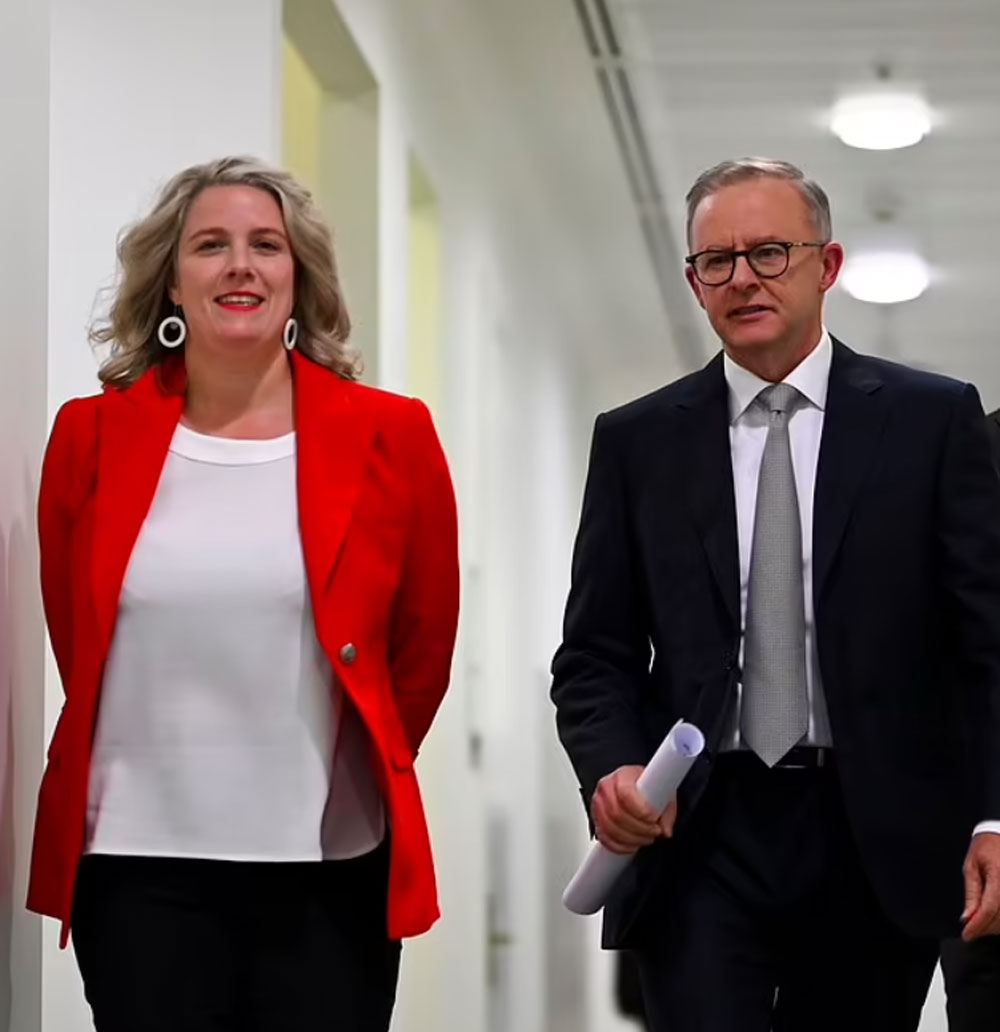
International students who want to permanently live in Australia will find it easier under new government rules.
The Albanese government will in March remove a rule that blocks people from studying in Australia who say they want to move here permanently.
The new rule will be part of a ‘genuine student test’ aimed at filtering out foreigners who come to Australia under a student visa but who instead intend work.
The aim is to filter out those who are lying about their intentions in the country, while formalising the process for a smaller number of genuine students who want to forge a career in Australia.
Former top immigration official Abul Rizvi said the rule change was sensible.
‘I actually think the government should go further, and say one of the primary objectives of the international student program is to recruit future Australians. That’s what it does. Why not just say it?’ he said.
International Education Association of Australia head Phil Honeywood, who is also co-convenor of the Council for International Education, said the change should help crackdown on dodgy immigration brokers who skirt the rules.
‘On the one hand, it has denied genuine students with skills in demand [who] indicated they might like to migrate to Australia. And on the other, it’s been easy for education agents to counsel students to give the right answers,’ he said.



Sneaking in with more gold for Australia on the final day of the World Swimming Championships! Qatar. February 2024



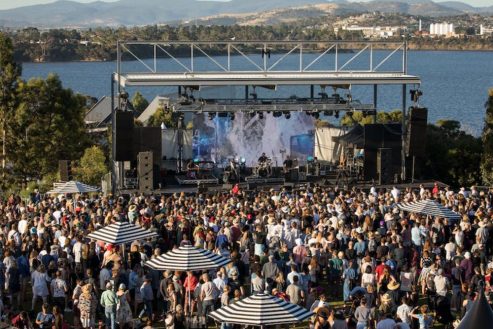

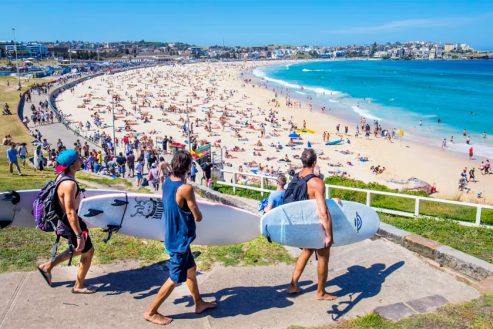
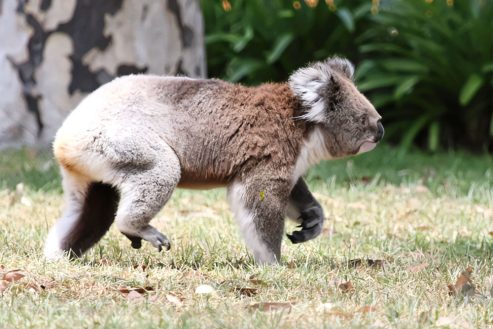
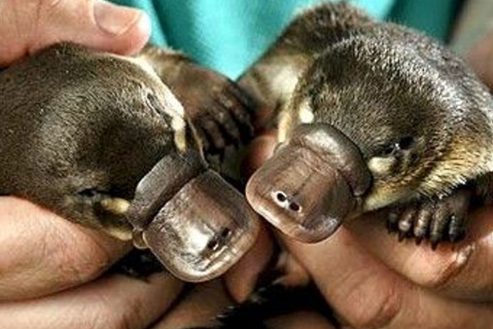

This Bulletin and its contents is for general information purposes only and should not be used as a substitute for consultation with professional advisors.
As legislation and travel requirements are constantly changing, we strongly recommend obtaining advice on your individual situation from a Registered Migration Agent. Please click here to book a consultation with one of our Registered Australian Migration Agents, located in Australia.






You can manage your membership and billing method by clicking here
Terms of Service
Privacy Policy
Copyright © 2025 Office of Immigration Australia, a private company registered in Australia. All Rights Reserved.